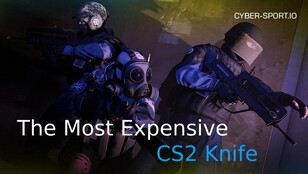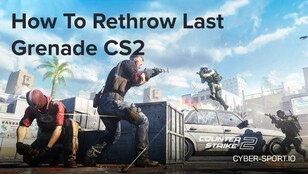Prices climb, drop, stall, or spike for no clear reason. They move for a variety of reasons, including sales and the opening of a single lucky case on Twitch.
This page examines how those numbers are formed and what drives them, using real-world examples from the CS2 marketplace. You’ll learn to read the built-in graphs, understand seasonality, and make smarter timing decisions without trying to “day-trade” digital skins.
Key Takeaways
- Steam Market prices reflect actual last sale values, not listings.
- The built-in price history graph smoothes data, so outliers do not always appear.
- Case releases, patches, and tournaments are frequently the catalysts for major price movements.
- Short-term dips are common during Steam Sales (liquidity draining).
- Correct timing of purchases or sales can offset the 15% combined fee.
How Does Price History Work?
When you click "View in Community Market" for a CS2 skin, you will see a graph rather than a live ticker. It's a rolling chart that includes all successful sales over the last 30 or 90 days.
Each dot represents a completed transaction, not a listing. That’s important, because listing prices can sit far above actual sales for days without affecting the chart.
Steam smooths the data, removing extreme outliers, for example, accidental listings at $0.01 or $5,000. It’s useful for spotting trends, but it can hide short bursts of volatility. If you’ve ever watched a rare sticker jump 50% in a day and then “disappear” from the chart, that’s why.
Outliers typically occur when:
- An item hasn't sold in weeks, and a single overpriced listing appears.
- A user cancels several listings, reducing visible supply.
- The valve undergoes maintenance, resulting in a minor reporting lag.
How to Interpret the Graph's Axis
- X-axis (time): shows sales per day; older data gets compressed.
- Y-axis (price): reflects the median sale value, not the highest.
- Volume bars: indicate how many items actually sold that day.
High volume + stable price = liquid item. Low volume + wide spread = volatile or illiquid.
Over time, you begin to recognize familiar shapes, slow climbs before updates, and sudden cliffs after major patches. Think of them as mini market cycles.
Event-Driven Moves: Why Prices Shift
Price movements in the CS2 Steam Market are rarely isolated. They are typically triggered by external events.
Valve does not announce every backend change, but the community can identify patterns. Here are the primary drivers of market volatility:
Operations and Case Drops
When Valve introduces a new Operation or Case, attention shifts. Older cases frequently experience brief price drops as players liquidate to purchase the new content. A month later, the older cases begin to rise again; fewer drops, less supply.
The Operation Riptide case is a textbook example: it began at $0.30, hovered for months, and then climbed above $2 after rotation ended.
Weapon tweaks and visual changes have an impact on demand. When a new skin looks better with updated lighting, the price increases. When a gun gets nerfed, skins drop temporarily. It's subtle, but visible on charts: short valleys that recover within a week or two.
Esports and Major Hype
When a major tournament occurs, sticker and souvenir prices frequently rise. Remember the Antwerp 2022 boom? Overnight, the entire number of sticker capsules doubled.
Those spikes typically fade after the event, but the best-looking or rare signature stickers frequently retain their value.
Steam Sales
Summer and winter sales affect the market in unusual ways. Players cash out items to purchase discounted games, increasing the supply. Prices fall by 10-20% across common skins before recovering in July or January when spending slows.
If you're patient, these sales are ideal for resellers and collectors.
Reading the Graph and Recognizing Patterns
Reading Steam graphs is similar to reading financial charts in that it follows the same principles but requires less math. The idea isn’t to predict the future, just to recognize behavioral patterns.
Here are a few patterns to keep an eye on:
| Pattern Type | What It Means | How to React |
| Gradual Uptrend | Consistent demand, limited supply | Good for long-term holding |
| Sharp Spike, Fast Drop | Hype or manipulation | Avoid buying mid-spike |
| Flat Line, Low Volume | Illiquid item | Hard to sell quickly |
| Periodic Dips | Seasonal or event-driven | Opportunity for lower entry |
| Sudden Volume Surge | News or influencer impact | Wait 24–48h to confirm stability |
Support and Resistance
In traditional markets, support is the price at which buyers enter, while resistance is the price at which sellers flood the market. These levels also exist on Steam.
When an item repeatedly bounces around $1.20–$1.25, that’s a support zone. When it struggles to break $2, that is resistance.
Understanding those levels allows you to set reasonable listing prices, slightly below resistance if you want a quick sale, or near support if you're hoping for a rebound.
Seasonality and Players' Behavior
Every December, the same pattern emerges: active player counts increase, casual traders return, and skins with festive colors (reds, greens, and white patterns) experience minor surges.
Then, in late January, things cool off again.
It’s not perfect science, but knowing these rhythms can help you avoid panic selling.
Practical Tips to Time Buys and Sells
Let’s connect the dots on how you actually use this data to make smarter moves.
First, remember that every sale on Steam takes a 15% total cut. 10% goes to the game developer (Valve for CS2), and 5% goes to Steam itself.
If a skin sells for $10, the seller receives $8.50. That means if you bought that item at $8.50, you’d need to resell it above $10.05 just to break even. Timing matters more than most realize. A few cents can eliminate your margin.
Here are a few practical rules of thumb:
- Use the 7-day and 30-day averages: If today’s price is 10% below the 30-day average, it’s often a dip worth watching.
- Avoid trading immediately after a patch: Prices are unstable; spreads widen.
- Sell during weekend peaks: Player activity is higher; more buyers equals faster fills.
- Do not chase hype: If a case or sticker is trending on Reddit, you're probably late.
- Use fees to your advantage: Since everyone pays the same 15%, margins compress evenly, implying that timing and liquidity are more important than pure luck.
Simple Fee Math Example
Let’s say you buy a Classic Knife | Fade (Factory New) for $450 and later sell it for $500.
- Sale Price: $500.
- Steam Fee (5%): $25.
- Game fee (10%): $50.
- Net to Seller: $425.
Profit: $-25 loss.
You'd need to sell for around $550 to make a profit. That is why serious market participants track their net value rather than just the sale price.
When you trade smaller items (under $5), the math becomes even tighter, but those markets also move faster.
Common CS2 Market Items
Here's a simple example table of some common CSS2 items:
| Item | 30-Day Avg | 90-Day Trend | Liquidity Note | Tip |
| AK-47 | Redline (FT) | $7.20 | Slight Uptrend (+4%) | High |
| M4A1-S | Nitro (MW) | $1.05 | Stable | Medium |
| Operation Bravo Case | $12.80 | Uptrend (+18%) | Low | Rare drop, but slow to sell |
| Sticker | Vitality (Paris 2023) | $0.45 | Slight Downtrend (–6%) | Very High |
| Navaja Knife | Case Hardened (FT) | $85.00 | Volatile | Low |
These are not price predictions, but rather reference patterns. The actual numbers change daily, but the relationships (high liquidity vs. slow movers) remain consistent.
Why Liquidity Matters
A skin's "price" is meaningless if it doesn't sell. Liquidity, how quickly an item can be converted back into Steam Wallet funds, determines its true value. Common rifles, cases, and stickers have liquidity. Rare knives or souvenir drops often sit listed for weeks.
If you’re trying to build a small trading bankroll inside Steam, focus on high-volume, mid-price items between $0.50–$10. They’re easy to flip, less risky, and less affected by one or two listings disappearing.
Market Cap and Broader Context
People sometimes use the term "market cap" when discussing CS2 items, but this is an informal term. Valve does not publish official totals.
Still, it’s possible to estimate. Multiply an item’s average price by the number of listings, and you get a ballpark figure.
For popular cases or stickers, this can amount to millions of dollars in circulating value. The most important takeaway: the CS2 market behaves like a real economy, with supply, demand, speculation, and regulation, but without fiat withdrawals.
Methodology
The price examples provided here are based on live Community Market data that has been averaged over several months. We filtered out short-term anomalies, rounded values to two decimals, and ignored listings that never filled.
When estimating trends, we compared 30-day and 90-day averages to identify persistent direction, not momentary jumps.
External references include:
- Steam Community Market's public data endpoints.
- Official Valve Economic Posts and Patchnotes
- CS2 case history trackers from reliable community databases.
We avoid any third-party resale data in order to fully comply with Steam's Terms of Service.
Final Thoughts
CS2 market pricing is not random. It combines behavioral economics and game design. When you understand how graphs, fees, and events interact, the chaos becomes more manageable. You'll notice when demand dries up, when hype builds, and when to simply wait.
The Steam Market rewards patience over prediction. Watch the charts, learn the rhythm, and you'll eventually recognize when the numbers are quietly working in your favor.
FAQs
Why do some prices remain flat for weeks?
Usually, because the volume is low. If only one or two items sell each week, the price graph barely changes.
What causes the sudden spikes?
Either a patch, a big streamer opening that item, or artificial hype. Wait 24–48 hours before reacting.
Do regional currencies influence prices?
Yes, prices are displayed in your local currency, and exchange rates have a subtle impact on cross-region averages.
Why is my item labeled "delisted" or "no recent sales"?
That simply means that no completed trades were recorded recently, not that the item vanished.
Are Steam Market graphs active?
They update every few hours. It’s not a real-time feed.
How frequently does Valve adjust market rules?
Fee changes or anti-fraud updates can occasionally cause temporary shifts in liquidity patterns.
CS2 Gambling
CS2 Skin Trading
Rust Gambling
Promo Codes
Online Casinos
Crypto Casinos
CyberSport Feed



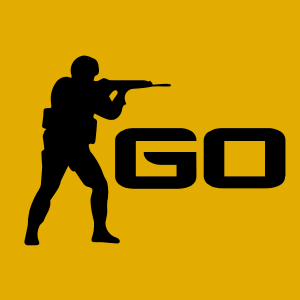

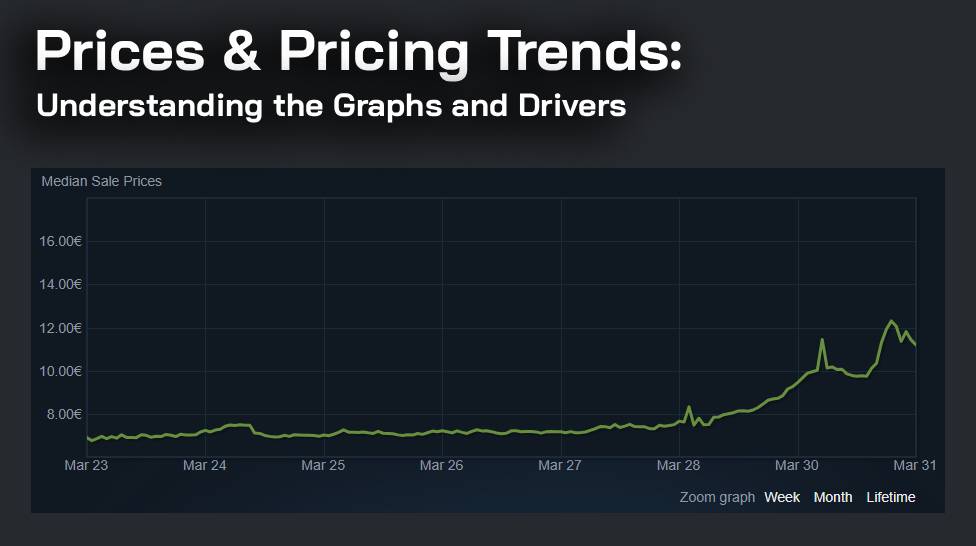


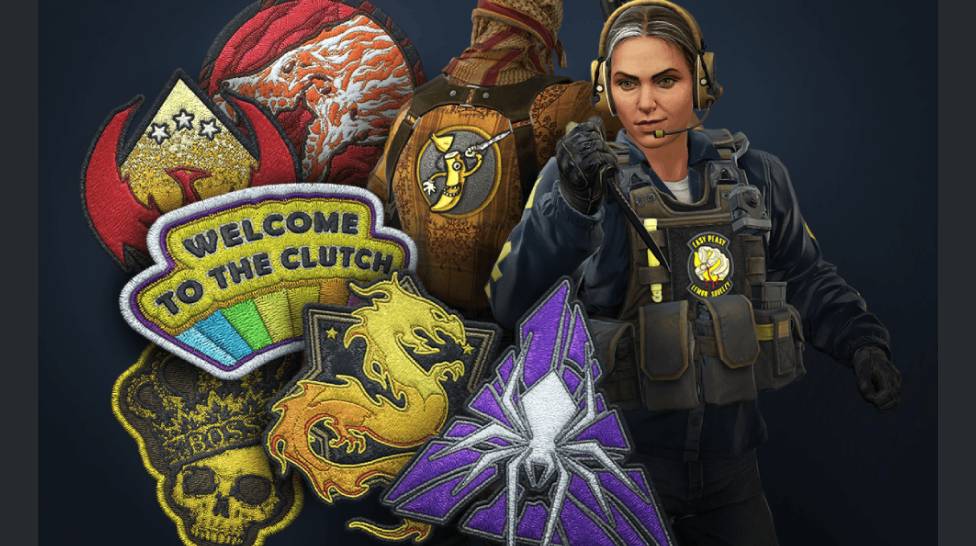
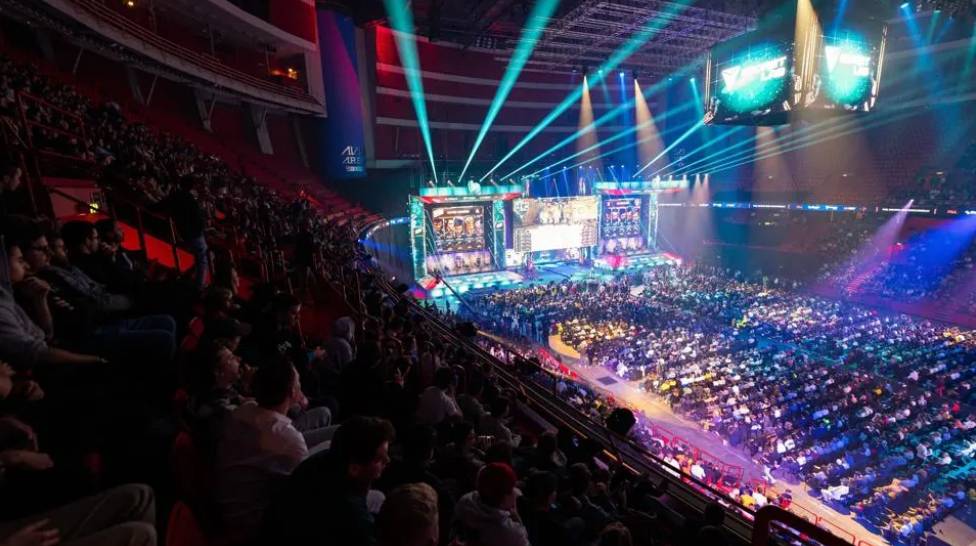
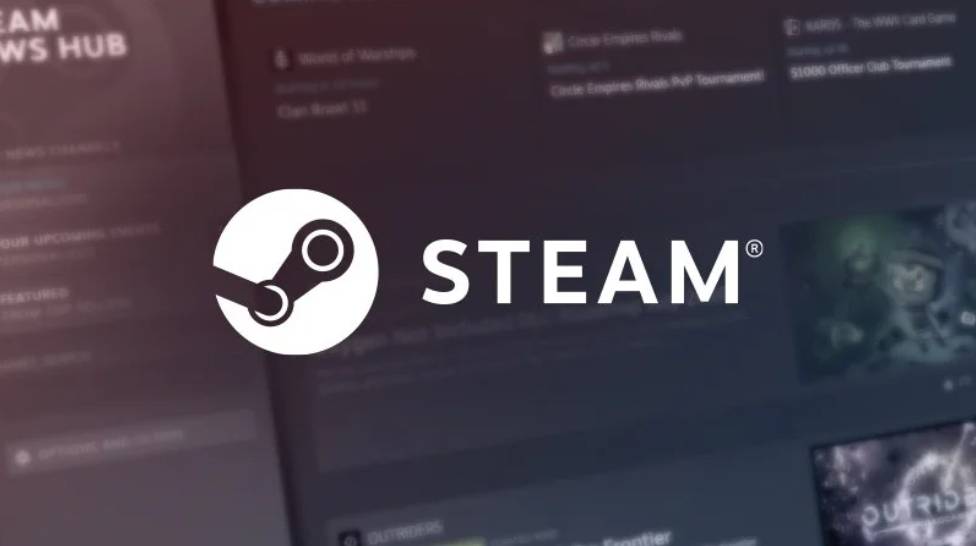

![How to Deposit Money or Skins into CSGORoll ([year]) How to Deposit Money or Skins into CSGORoll ([year])](/imgs/news_8218/20250602/cache/1748864443_a25e3ae72a35709014f6___308_174.jpg)

